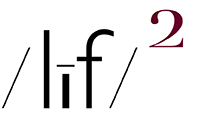I MUST ADMIT THAT I HAVE A FAIR AMOUNT of pity-but no sympathy-for those picture makers who whine about "real" camera menu complexity.
That state of mind springs from the fact that, iMo, if one is fiddling with a camera's menus during the picture making process, he/she is an idiot. And, I most always have pity on idiots cuz they just can't help themselves.
To wit, the age-old adage which advises again thinking when making a picture is a very valuable one, especially so involving gear. Inasmuch as, iMo (any many others), a significant component in the making of good pictures is for the picture maker to respond, with as little interference as possible, to the visual and emotional aspect(s) of what he/she sees, letting a camera's operational procedures "get in the way of" that response is counter-productive to good picture making.
In fact (and in practice), what a picture maker should do is to learn, gear / technique wise, what his/her picture making requires. Master it and then, "forget it" so, that at the moment of having one's eye and sensibilities pricked, it is, at most, a simple matter of adjusting the picture making triangle-aperture, shutter speed, focus-and clicking the shutter release. In other words, to act instinctually / intuitively, AKA: the ability to apply knowledge without recourse to conscious reasoning.
AN ASIDE...In the digital picture making world, much of the adjusting can be eliminated by the use of "auto" settings-something I use to avoid like the plague-as in auto exposure, auto focus, auto White Balance, and the like. Today's in-camera AI is incredibly capable of getting it right. END OF ASIDE
Of course, I understand that many who come to the sport of picture making find the act of tinkering and fiddling with gear and technique its most endearing and involving characteristic. Which only goes to prove Julian's grandmother's statement that, "For every pot, there's a lid." Or, in other words...to each his own. Or, whatever floats your boat.
All of that written, here's a fact; the overwhelming number of successful and admired picture makers-those whose pictures are judged to be Art-keep their picture making simple...1 camera, 1 lens, l film / digital senor, and even in some cases, 1 aperture (f64 group). And, of course, one singular vision. They don't think about it, they just "set it and forget it."
More is the pity, in the digital domain, that more picture makers do not follow that proscription.


